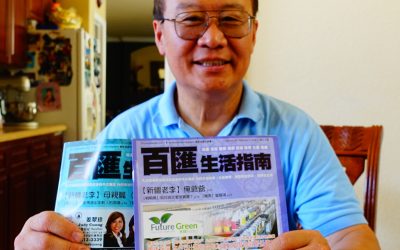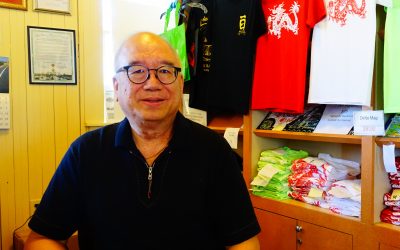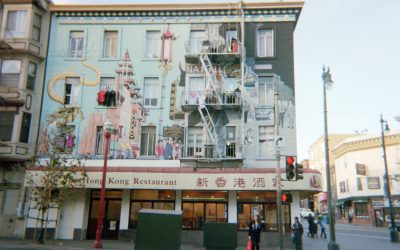Visualizing Chinese Immigration

“Visualizing Chinese Immigration” is a digital project based on Shiqi Xie’s Master thesis “Reimagining Model Minority: Post-1965 Chinese Immigration in the United States.” This project seeks to raise awareness of the history of Chinese immigration. By addressing several questions throughout the research, this project elaborates on the idea of Model minority and complex relationships between immigrants and the issues they confront. Behind immigration records, What are the common discourses on the Chinese American? To what degree, are Chinese immigrants assimilated into American life? To what extent do Chinese immigrants agree with the model minority concept? Bear these questions in mind. Perhaps you will find the answers after experiencing this website.
Discover CHINESE IMMIGRATION
Historical Overview
Historically, Chinese immigrants were the earliest Asian immigrants to the U.S.
By as early as the 1820s, official immigration documents have recorded the arrival of immigrants from China.The first significant presence of Chinese in the U.S. appeared during the California Gold Rush. Only a few Chinese were able to make fortunes out of the Gold Rush. Most Chinese ended up entering other sectors of economy, such as railroad construction, farming and fishing. Chinese workers were praised for their efficiency and used by owners of factories to end union strike aroused by white employees.The notion that the Chinese worked hard without complaint put Chinese on the opposite side of the unions, which turned Chinese as a threat to the white labors. Under the riot of anti-Chinese sentiment, the Chinese Exclusion Act was approved on May 6, 1882, which banned the entry of Chinese laborers for ten years.
1848
Golden Rush
The first significant presence of Chinese in the U.S. appeared during the California Gold Rush. Following the discovery of gold by James Marshall on the South Fork of the American River, thousands of Chinese men who were longed for wealth and prosperity stepped their feet on the land. Between 1848 to 1951, Chinese started to arrive in San Francisco, then headed for Sutter’s Mill. By the end of the 1850s, more than 30,000 Chinese came to America.
An act to execute certain treaty stipulations relating to the Chinese, May 6, 1882; Enrolled Acts and Resolutions of Congress, 1789-1996; General Records of the United States Government; Record Group 11; National Archives. click here
1882
Chinese Exclusion Act
The Chinese Exclusion Act was approved on May 6, 1882, which banned the entry of Chinese laborers and forbade the naturalization of Chinese persons. It had Chinese Exclusion Act was approved on May 6, 1882, which banned the entry of Chinese laborers for ten years except for diplomats, students, teachers, merchants and visitors. The Act also forbade the naturalization of Chinese persons.
Number BEYOND IMMIGRATION
The 1965 Immigration reform has produced a heterogenous Chinese immigrant population made up of people with diverse characteristics.
The 1965 Immigration Reform has accounted for most of the growth of Chinese population in the U.S. Ever since the 1965 immigration reform, between 1965 and 2016, more than 2.7 million Chinese immigrants from Mainland China, Hong Kong, Taiwan and Macau were admitted to the U.S., almost 7 times the total Chinese immigrants admitted to the U.S. between 1850 and 1959.
The contemporary Chinese community in the U.S. is still considered as a predominantly immigrant society as 70 % of the Chinese population in the U.S. are foreign born nowadays. 80% of the Chinese population in the U.S. speak languages other than English at home. In comparison, 13.7% of the total population are foreign-born, while 8.6% of the white population are foreign born.
Chinese Immigration in the U.S. SINCE 1965
The data visualization on the right reflects the rapid flow of Chinese immigrants into America since the 1965 immigration reform. These number also reflects changes in the diplomatic relations between China and the U.S, such as the normalizations of U.S.-China relations in 1978, which resulted in an unceasing flow of Chinese immigrants from the Mainland China and a separate immigrant quota for Taiwan since 1981.
MEET THE PEOPLE
Meet Lao Li
Meet the PeopleXinjiang Lao Li is the pen name of Cliff Li. Cliff Li was born in 1957 in Shanghai. He went to Xinjiang when he was five with his parents, who was sent there as Xinjiang reconstruction teachers. Li spent most of his young life in Xinjiang. Li’s whole...
Meet Douglas
Meet the PeopleMr. Hsia was born in a wealthy Shanghainess family in Hong Kong. In 1974, Mr. Hsia and his mother immigrated to the U.S. under the family reunification category. It didn’t take Mr. Hsia a long time to adjust to the new life in the U.S. Coming from Hong...
Meet Clarence
Meet the People Mr. Chu was born in 1952 in Guangzhou, and moved to Hong Kong in 1956 in seek for asylum. There are 8 children in his family. His grandfather had suffered from political persecution after the communist party took over China in 1949. Fortunately, his...
Story
Model Minority: Myth or Reality?
Model Minority During World War II, an IQ testing that Japanese American youth participated in contributed to the image of the intelligent Japanese American. This intelligence test result later became part of the demonstration for a myth that stereotypes Asian...
Assimilation
ASSIMILATION Chinese American author, journalist and activist Helen Zia, has raised a question in her popular work Asian American Dreams: The Emergence of an American People, “what does it take to become American?” The question Helen Zia asks reflects a struggle of...
Glass Ceiling
Glass Ceiling Issue and Beyond “Asian Americans are the forgotten minority in the glass ceiling,” stated Buck Gee and Denise Peck, in a report on their research on Asian American professional performance in Silicon Valley. In the report, Buck Gee and Denise...







